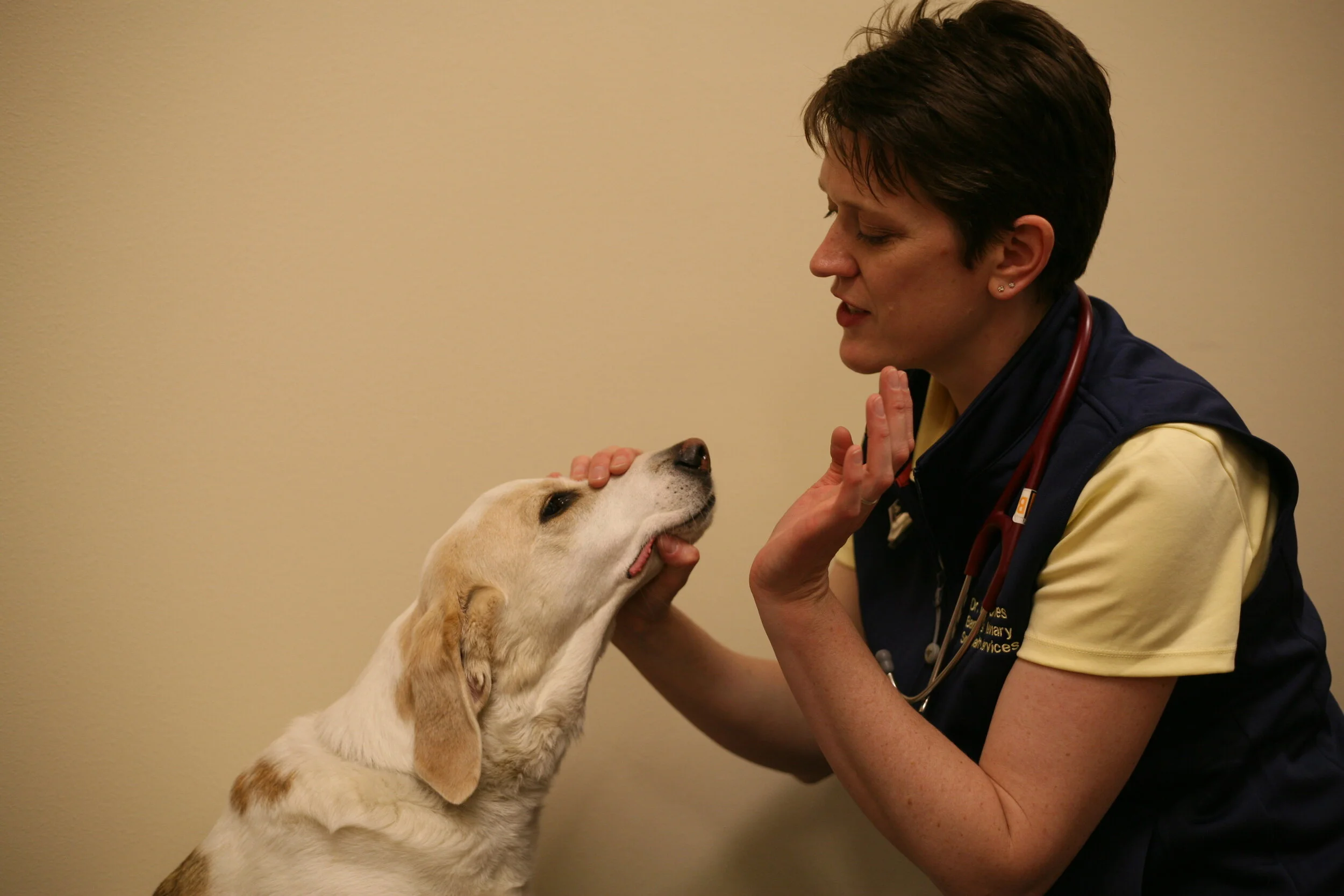Tick Paralysis and Dogs
The ticks are still here but owners may have stopped applying topical treatments. So fall is the time to be on the look out for Tick Paralyses (okay, really anytime but now isn't a BAD time to be aware)!
What causes Tick Paralysis?
Salivary transfer from a Dermacentor (in America) and Ixodes (in Australia, for my Australian readers) will result in neuromuscular blockade. How it actually works is really pretty ingenious. (Skip this next part if you're in a hurry.) At the presynaptic terminal, acetylcholine packets must be released into the neuromuscular junction so they can then bind to the post synaptic (muscle) membrane receptors. The acetylcholine binds to the presynaptic membrane using specific proteins as well as calcium. The saliva from one of the aforementioned types of ticks will interfere with acetylcholine release at the presynaptic terminal by binding calcium. Amazing, really.
What are the common clinical signs?
If you cannot release acetylcholine from the presynaptic membrane at the neuromuscular junction, what can you do?
Exactly, nothing.
Therefore clinical signs are an ascending pelvic to thoracic limb flaccid paralysis. No reflexes, no motor, no paw replacement, nada. These signs begin 5-9 days after exposure to the tick saliva. Cranial nerves are RARELY affected. This is important because botulism more commonly affects cranial nerves and this can be one way to try to differentiate between these two diseases.
How do you make the diagnosis?
1. Find the tick.
2. Remove the tick.
2.5 (Apply Frontline/Bravecto/other)
3. Clinical improvement should begin 24-48 hours after tick removal.
No specific testing is available to confirm the diagnosis.
I once had to find a tick on an Old English Sheepdog waaaay back in the year 2000. Topical tick treatment wasn't as prevalent then as it is now, so our solution was to shave the dog. We found the tick between the dog's toes. (Insert eye rolling here!!) In 2020, I suggest applying Frontline/Bravecto (your choice of topical flea treatment) first then perform a non-invasive tick hunt and monitoring for clinical improvement. If ineffective after 48 hours you can either commence a thorough tick hunt, or search for other causes of flaccid paralysis. (Or, call me for a neurology consultation!)
How do you manage patients flaccid paralysis?
Flaccid paralysis means that the animal does not have reflexes, or voluntary motor. As such, these animals may be at risk of respiratory failure due to loss of intercostal muscle function. Therefore CO2 monitoring, respiratory watch and ventilatory support if needed can be very important in the early stages of disease. Due to the rapid recovery, most patients do not need long-term intensive nursing care or physical therapy.
I hope you are doing well and staying safe. I appreciate what you do to help clients and their pets. Let me know how I can help you manage your patients with neurologic disease.
On site consultation is available Monday through Saturday at variable times throughout the week. Email consults are completed in evenings.
Have a good week!




